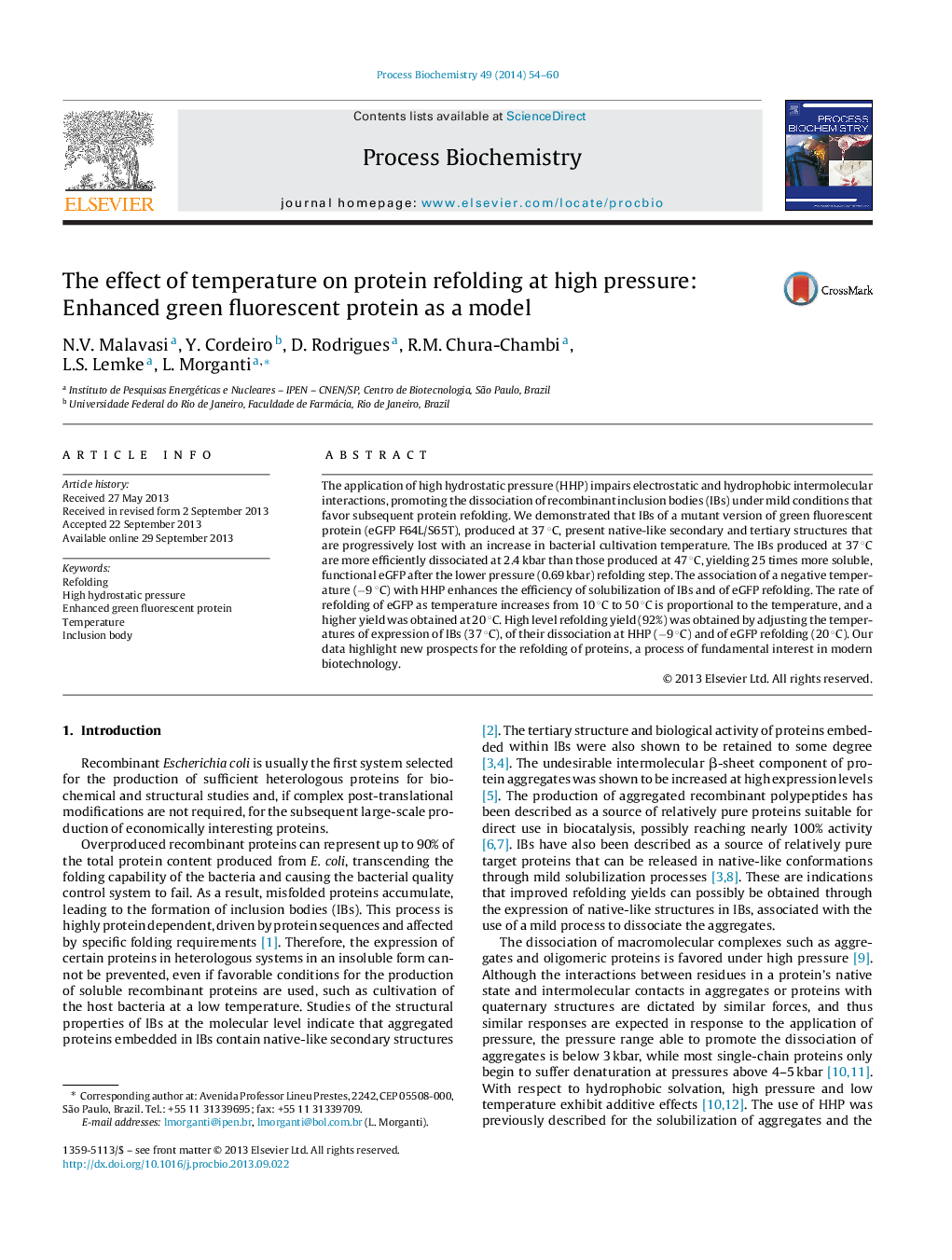| Article ID | Journal | Published Year | Pages | File Type |
|---|---|---|---|---|
| 34823 | Process Biochemistry | 2014 | 7 Pages |
•EGFP IBs produced at 37 °C present native-like secondary and tertiary structures.•IBs are disaggregated at HHP (2.4 kbar).•The efficiency of dissociation of IBs at HHP is enhanced at negative temperature.•The rate and the yield of eGFP refolding at 0.69 kbar are dependent of temperature.•High yield of refolding of eGFP (95%) is obtained at 0.69 kbar and 20 °C.
The application of high hydrostatic pressure (HHP) impairs electrostatic and hydrophobic intermolecular interactions, promoting the dissociation of recombinant inclusion bodies (IBs) under mild conditions that favor subsequent protein refolding. We demonstrated that IBs of a mutant version of green fluorescent protein (eGFP F64L/S65T), produced at 37 °C, present native-like secondary and tertiary structures that are progressively lost with an increase in bacterial cultivation temperature. The IBs produced at 37 °C are more efficiently dissociated at 2.4 kbar than those produced at 47 °C, yielding 25 times more soluble, functional eGFP after the lower pressure (0.69 kbar) refolding step. The association of a negative temperature (−9 °C) with HHP enhances the efficiency of solubilization of IBs and of eGFP refolding. The rate of refolding of eGFP as temperature increases from 10 °C to 50 °C is proportional to the temperature, and a higher yield was obtained at 20 °C. High level refolding yield (92%) was obtained by adjusting the temperatures of expression of IBs (37 °C), of their dissociation at HHP (−9 °C) and of eGFP refolding (20 °C). Our data highlight new prospects for the refolding of proteins, a process of fundamental interest in modern biotechnology.
